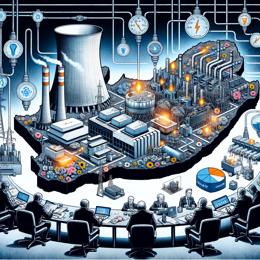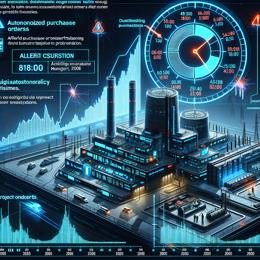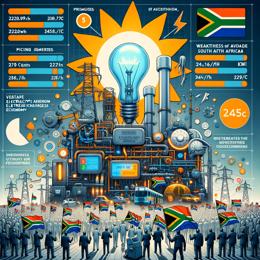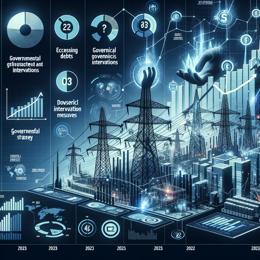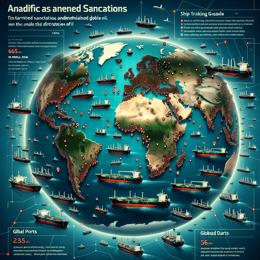Image created by AI
The Shifting Power Dynamics in South Africa: How IPPs Are Undercutting Eskom's Monopoly
The South African energy giant, Eskom, finds itself at a critical juncture as independent power producers (IPPs) increasingly undercut its electricity production rates. Recent data from the Department of Mineral Resources and Energy (DMRE) vividly illustrates a seismic shift in the country's electricity markets that could predict a dwindling role for the traditional powerhouse.
Since 2011, the South African government has embraced IPPs through a series of bid windows, aimed at diversifying and securing the nation's energy supply. The initiative gained momentum despite governmental delays, adding a substantial 7,361MW to the national grid from 2013 to 2024, largely driven by renewable sources such as solar and wind. This move towards renewable energy is in stark contrast to Eskom’s reliance on coal and frequent tariff hikes spurred by rising production costs.
Daily Investor's exploration into Eskom's financial statements and DMRE's report uncovers that while IPPs have successfully slashed their energy prices significantly—in some cases, by as much as 88%—Eskom's generation costs have continued to climb. For instance, the cost of solar power plummeted from R4.66 per kWh in 2011 to just R0.56 in the latest bidding session in 2023. Meanwhile, Eskom's expenditure to generate the same amount of energy soared to approximately R1.50 per kWh.
The stark difference in cost efficiency between Eskom and IPPs is not purely a matter of operational efficiency but also of scale and advances in technology, particularly in renewable energy sectors. The global shift towards sustainable and green energy has fueled competitive prices and efficiencies in solar and wind generation, areas in which IPPs are particularly active. This transition is likely to pressurize Eskom further, which has already been grappling with corruption, mismanagement, and an inability to manage its staffing and financial deficits efficiently.
Looking ahead, Eskom may face even greater challenges. The impending enactment of the new Electricity Regulation Act promises to liberalize the market further, allowing cities and communities to opt for IPP-generated electricity over Eskom’s. This scenario, coupled with the potential rise in self-generated power through household solar panels and batteries, positions IPPs favorably as the future backbone of South African energy.
Moreover, the spin-off of the National Transmission Company of South Africa (NTSCA) aims to create a level playing field in electricity transmission, potentially ending Eskom’s preferential treatment and aligning it closer with IPPs under common regulatory standards.
Should these changes manifest as expected, Eskom's future as a monopoly looks bleak. The utility might find itself in what has been termed a "death spiral," having to raise prices to compensate for a shrinking customer base while simultaneously battling to rein in untenable operational costs.
South Africa stands at a crossroads, with its energy sector poised for a significant transformation. Eskom’s ability to adapt to these changes, alongside an increasing move towards renewable energies by IPPs, will likely determine its role and relevance in the future energy landscape of the country.


